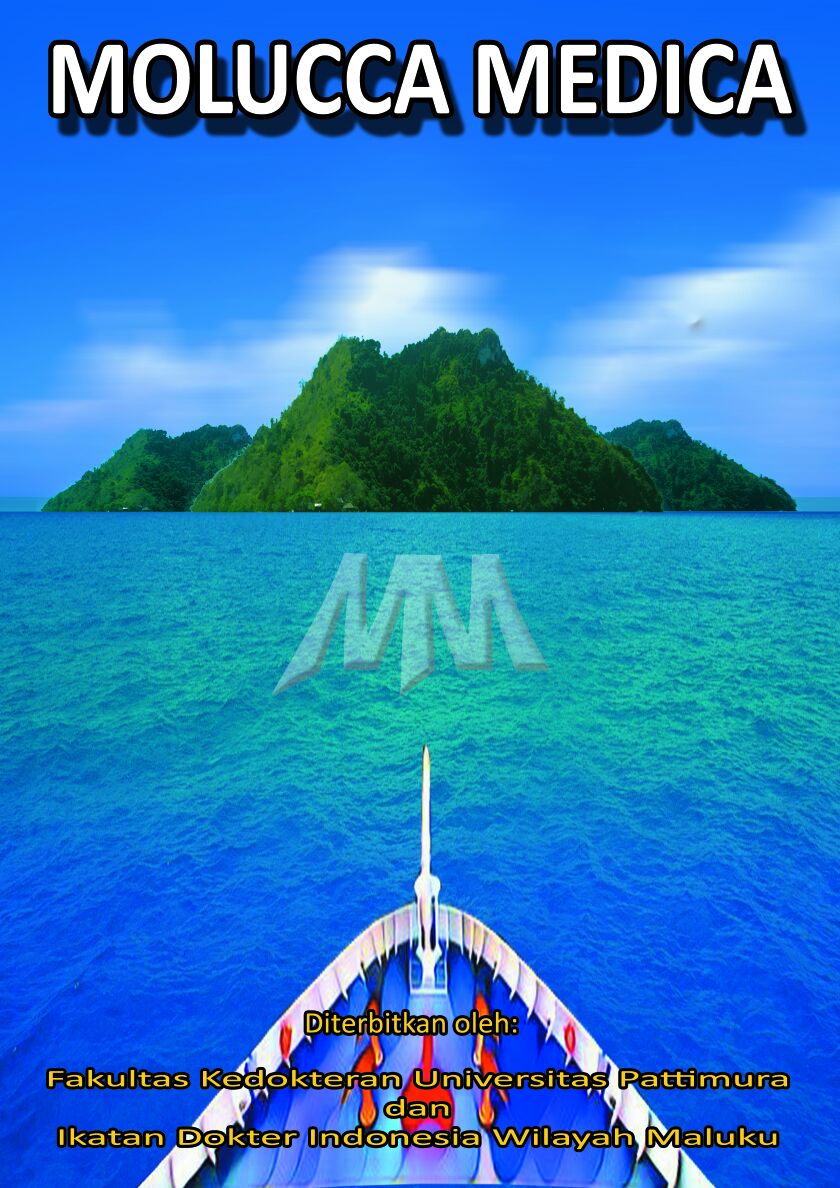A CASE REPORT NEEDLEFISH BITE WOUND TO THE LEFT PELVIC REGION
Abstract
Introduction : Needlefish are predatory schooling fish with long slender jaws that have been known to leap out of the surface of the water at high speeds. Needlefish (Family Belonidae) are carnivorous fish that have long beaks that are studded with teeth, elongated bodies measuring up to 2 m, and live in temperate waters. Benefits of the emergency debridement and antibiotic prophylaxis. Case illustration : A 30-year-old male, fisherman by profession, presented 7 h after an odd accident while at sea. He gave a history of being injured by the horn of a 2-ft-long needlefish, which rose above the water and went through the right pelvic region. Clinical examination revealed an entry wound of 3x5 cm based on bone. The patient was hemodynamically unstable and in pain. The routine biochemical parameters in his blood were normal. We did the emergency resuscitation and debridement with local anesthesia in primary health care. The patient was hemodynamically stable 40 hours after debridement. We gave antibiotics, pain management, and tetanus prophylaxis. The patient was discharged home and 1 week after the accident there was no complaint. Conclusion : While rare, Needlefish related injuries can have clinical sig nificance in excess of their external appearance. Injuries caused by Needlefish and other fish should be considered when the patient’s injury history is consistent with a possible injury by a Needlefish or similar organism. The diagnosis was prompt, and even though the presentation to the casualty was delayed, immediate resuscitative measures and surgery ensured successful management of the patient.Downloads
References
Barss PG.Injuries caused by garfish in Papua New Guinea, Br Med J (Clin Res Ed). 1982; 284 (6309): 77–79, Available from https://doi.org/10.1136/bmj.284.6309.77.
Labbe JL, Bordes JP, Fine X.An unusual surgical emergency A knee joint wound caused by a needlefish, Arthrosc J Arthrosc Relat Surg. 1995; 11 (4):503–5. Available from https://doi.org/10.1016/0749-8063(95)90209-0
Thaiger T. Freak needle-fish accident kills Thai Navy cadet. The Thaiger. December 15, 2018.
McCabeMJ, HammonWM, HalsteadBW,NewtonTH.A fatal brain injury caused by a needlefish, Neuroradiology. 1978; 15 (3): 137–139, Available from https://doi.org/10.1007/BF00329055.
Link K, Counselman F, Steele J, Caughey M. A new hazard for windsurfers: needlefish impalement. J Emerg Med.1999;17(2):255-9.
Gonçalves LF, Martins IA, Junior VH. Needlefish injury in a surfer: a risk to those practicing water sports. Wilderness Environ Med. 2020;31(3):376-8.
Collette BB, Family Belonidae Bonaparte 1832. Annotated Checklists of Fishes 16. California: California Academy of Sciences; 2003:1e22.
Figueiredo JL, Menezes NA. Manual de peixes do sudeste do Brasil. II Teleostei (1).S~ao Paulo: Museu deZoologia; 1978:100e10.
Haider A, Minckler D, Yonkers M, Tao J. Orbital injury from needlefish impalement. Ophthalmic Plastic Reconstr Surg. 2015;31(6), e170.
Aras M, Miloglu O, Barutcugil C, Kantarci M, Ozcan E, Harorli A. Comparison of the sensitivity for detecting foreign bodies among conventional plain radiography, computed tomography and ultrasonography. Dentomaxillofac Radiol. 2010;39(2):72-8
Levine M, Gorman S, Young C, Courtney M. Clinical characteristics and management of wound foreign bodies in the ED. Am J Emerg Med. 2008;26(8):918-22
Diaz J. Skin and soft tissue infections following marine injuries and exposures in travelers. J Travel Med. 2014;21(3):207-13.
Auerbach PS. Marine envenomations. N Engl J Med 1991;325:486 –93.
Foote A, Henderson R, Lindberg A, Grigg C, Greenfield C, Kirke A, et al. The Australian mid-west coastal marine woundinfections study. Aust Fam Physician. 2017;46:9237.
Copyright (c) 2023 Molucca Medica

This work is licensed under a Creative Commons Attribution-NonCommercial-ShareAlike 4.0 International License.


